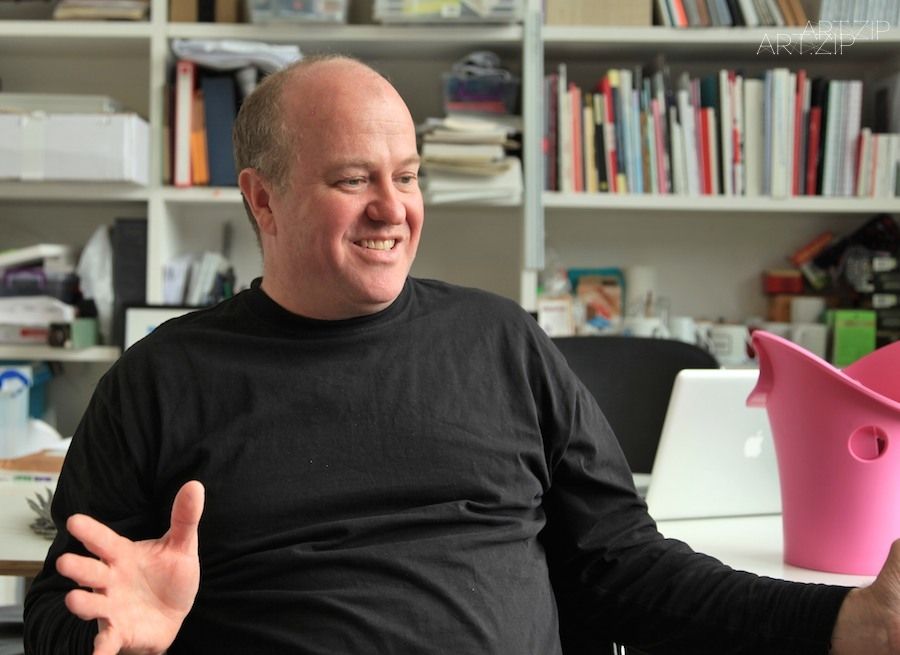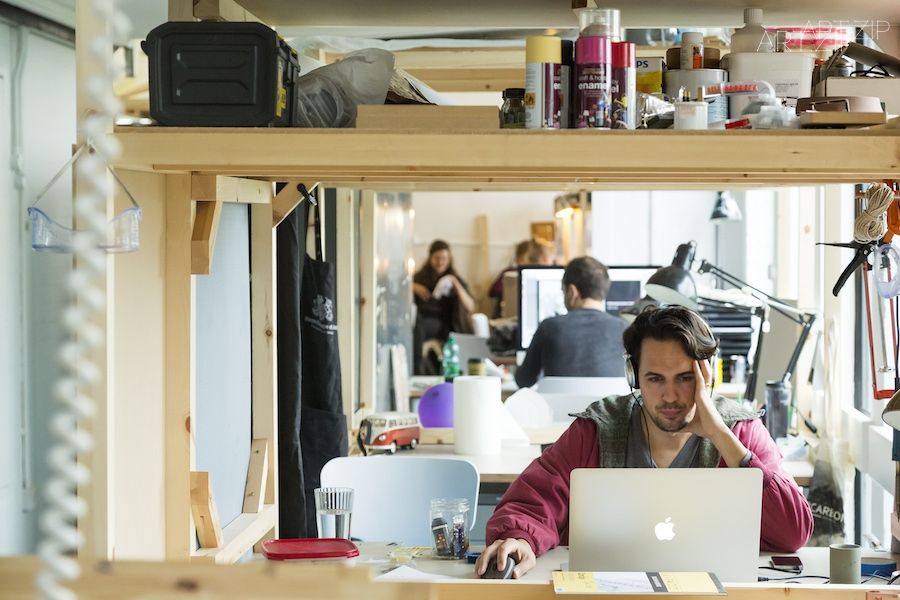
ART.ZIP: What about the new programme GID?
MP: Both of these are joint programmes with Imperial College London. The students there are both 100 per cent RCA students and 100 per cent Imperial College students, so the RCA brings creativity, art and design and all sorts of skills, and Imperial brings science, technology and engineering. This is an amazing resource for the students, who have access to some of the world’s top experts and all kinds of different resources. I think the next generation of design will be powered by emerging science and technologies that haven’t been developed yet. We’re at the crest of a tidal wave of development around design, which will hit in the next fifteen to twenty years. I think of something like Graphene, an amazing carbon material, which is in the lab. People at Imperial are making it. Within ten years, people here will be suggesting what do with it. That’s the moment we wait for, making something completely new. Giving students access to early knowledge is the power of these two programmes. You know it’s not easy. These are very, very different institutions. We straddle the border between arts culture and science culture. It’s where the magic is happening, where the sparks fly. It’s wonderful.
ART.ZIP: GID跟IDE的課程特色是什麼呢?
MP: 這兩者都是和倫敦帝國理工學院合作的課程。參與這兩個課程的學生都是百分百的皇藝學生和百分百的帝國理工學生,皇藝的學生帶來創意、藝術、設計和其他各種技能,而帝國理工的學生帶來的是科學、技術和工程學的知識。這對學生來說是很好的資源,他們可以接觸世界頂級的專家和各類資源,我認為新一代的設計很大程度上是受最新的科學技術影響而發展的。我們現在站在設計領域的最前線,這將影響未來十五到二十年的發展。像石墨稀這樣的新型碳材料,現在還僅是停留在實驗階段,而帝國理工的學生也正在進行著研究開發。在未來十年裡,人們考慮的是如何利用這種新型材料,而我們等的也是這樣的時刻來設計突破性的新產品。因此學生們能夠儘早地接觸這些資訊,以便有利於他們的設計,這點是IDE和GID課程很重要的一點。把這兩所如此不同的學院結合在一起是很不容易的,但是把藝術文化和科學文化融合在一起會產生奇妙的反應,就會產生無法預料的靈感和火花,我不得不說這真是最棒的體驗了。
..
.
ART.ZIP: What kinds of methods do you use to guide the students?
MP: Our job is to be a subtle shepherd. We know we want our students to go up to the mountain, and that’s going to be hard work, but we don’t want to say, ‘You must follow the path’, and we don’t want to build walls along the path so they only go up in one way. We say, ‘You could go up that mountain.’ When they start straight off the wrong way, we will gently put them back in the right direction. So it’s shepherding, it’s teaching from behind. You know, we put a hand on the shoulder when it’s needed. Part of the skill of our staff is to know when to hold back and when to jump in. Sometimes people say, ‘I don’t know where to go. I need you tell me.’ Very often they know what to do. We need to give them the chance to think about it. At Master’s level, that shepherding is done one way. At PhD level, the doctoral or research degree, it’s another level of even more subtle shepherding. It’s a step even further back, like calling someone from the mountain saying, ‘Get to the left.’ It takes one of our people to understand this.
Another quite magical aspect of the RCA is that we have lots of people from practice backgrounds. They are not necessarily trained academics, but they are very experienced trained practitioners, so they know how to do the job. People who typically teach here are naturally good teachers. They are able to combine their experiences and their ability to teach, to guide people.
ART.ZIP: 您通常使用什麼樣的教學手法來引導學生?
MP: 我覺得我的角色就像牧羊人一樣,起著護航和引領的作用。我們知道要讓學生往山上走,那不是容易的過程,但我們不想命令似地跟他們說“你必須往這條路走”,我們不想沿路樹立圍牆讓他們只往一條道走。我們會說,你需要到那山頭去。當他們一開始就走錯了方向,我們會拍拍他們的肩膀給他們指向正確的方向。所以說就像放羊一樣,我們從後面支持和指引他們。我們會在必要的時候提點他們。我們的教學人員都需要知道什麼時候進一步或什麼時候退一步來指導學生。有時候學生會說‘我不知道往哪走,你告訴我吧。’ 其實他們心裡是知道的,我們需要給他們機會讓他們自己去思考。在碩士研究生階段,這種放羊式的教學是單向的。但在博士生階段,那是另一種更寬鬆的放養教育模式。作為導師我們得退得更遠,就像對山上的人呼喊一樣,“哎!往左走!”。
皇藝的另一個很好的地方是我們很多教員都有豐富的實踐經驗。他們并不是從傳統的學術背景而來,而是擁有極其豐富實踐經驗的從業人士,所以他們知道怎樣能夠出色地完成工作。在這裡教學的老師大都是天生的好老師,他們總能很好地結合自身的經驗和優勢來引導學生。


